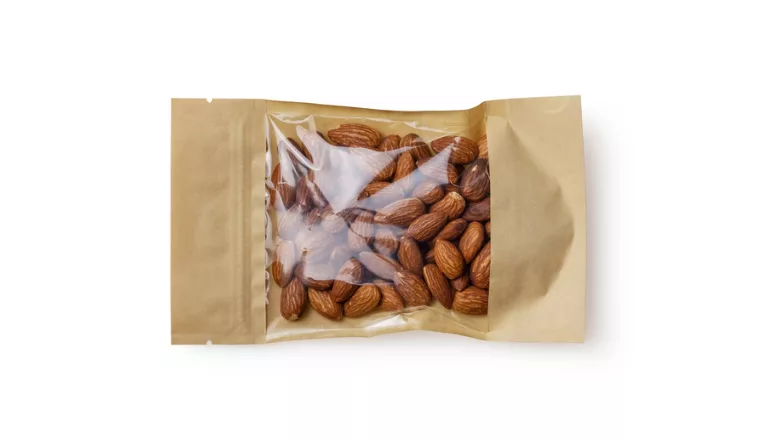“Safer” PFAS Types Used in Food Packaging Still Hazardous, Study Finds

Credit: Mockup Graphics via Unsplash
Replacement per- and polyfluoroalkyl substances (PFAS) heralded as “safe” for use in food packaging may actually break down into toxic PFAS that leach into foods and the environment, suggests a study published in Environmental Science and Technology Letters.
Due to the known exposure risks of using smaller PFAS molecules like perfluorooctanoic acid (PFOA) and perfluorooctanesulfonic acid (PFOS) in food-contact materials, many companies have pivoted to using larger polymeric PFAS to make wrappers, bowls, and other fast-food packaging water- and grease-repellant. These polymeric PFAS are promoted as “safer” alternatives that are inert and too heavy to escape from products.
However, the present study provides the first evidence that polymeric PFAS used in food packaging break down into smaller molecules that are still harmful and can leach into food and the environment.
“It is clear that polymers aren’t the harmless loophole the PFAS industry was counting on them to be,” said Marta Venier, Ph.D., co-author of the study and professor at Indiana University. “Their use in food packaging still leads to harmful and persistent PFAS contaminating the food we eat, and after it is thrown away, our air and drinking water.”
The researchers tested 42 paper-based wrappers and bowls collected from fast food restaurants in Toronto. A PFAS that is known to be toxic—6:2 fluorotelomer alcohol (6:2 FTOH)—was the most abundant compound detected in the samples. The polymeric PFAS present in the samples can transform into 6:2 FTOH compound, thereby exposing consumers.
Critically, the researchers found that the concentration of PFAS declined by up to 85 percent after storing the products for two years under normal conditions (at room temperature and in the dark). Much of these losses were consistent with the breakdown of the polymeric PFAS added to the fast-food packaging. These results contradict claims that polymeric PFAS are immobile and do not create exposure risks.
Some smaller PFAS molecules have been associated with a wide range of serious health harms—including cancer, obesity, and more severe COVID-19 outcomes—and the chemicals are known to contaminate drinking water. Only a small fraction of the thousands of existing PFAS have been tested for toxicity, and all PFAS (including polymers) are either extremely persistent in the environment or break down into extremely persistent PFAS.
Looking for quick answers on food safety topics?
Try Ask FSM, our new smart AI search tool.
Ask FSM →
These concerns have prompted 11 U.S. states to ban PFAS from most food packaging, and major chains like McDonalds and Chick-fil-A have committed to becoming PFAS-free by 2025.
“There has been great progress toward phasing out PFAS, polymers included, from fast-food packaging in the U.S.,” said co-author Arlene Blum, Ph.D., Executive Director of the Green Science Policy Institute. “However, this study calls into question the safety of polymeric PFAS for many of its uses. The best course of action to protect our children and future generations is to eliminate the whole class of PFAS from all non-essential uses, from food packaging to rain jackets, as soon as possible.”








